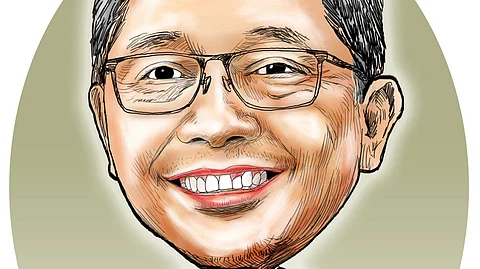
- NEWS
- the EDIT
- COMMENTARY
- BUSINESS
- LIFE
- SHOW
- ACTION
- GLOBAL GOALS
- SNAPS
- DYARYO TIRADA
- MORE

When former US President Joe Biden publicly disclosed his prostate cancer diagnosis, it served as a stark reminder that this disease spares no one — regardless of age, background, or status. Yet, it also highlighted one crucial point: while prostate cancer is common, it doesn’t have to be fatal.
In the Philippines, many men confront this illness in silence. Common misconceptions exist: “No one dies of prostate cancer, only with it,” or “I feel fine, so I must be healthy.” Such beliefs are dangerously misleading. Fear of diagnosis often leads to avoidance, but understanding the truth about prostate cancer can dispel myths and hopefully encourage early detection — when the disease is most treatable.
Globally, prostate cancer ranks among the most diagnosed cancers in men. In the Philippines, the situation is equally alarming. According to the Global Cancer Observatory (GLOBOCAN) 2020 data, prostate cancer is the third most common cancer among Filipino men and the second leading cause of cancer-related deaths in this group. Projections indicate a significant rise in both cases and fatalities over the next 15 years, surpassing global average rates. These statistics are more than just numbers — they represent our fathers, brothers, uncles and friends.
Prostate cancer often progresses silently, showing no symptoms in its early stages. Key risk factors include age and family history — elements beyond one’s control. However, lifestyle choices such as obesity, smoking, excessive alcohol consumption, poor diet, lack of exercise, and high stress levels can also contribute to the risk. These are modifiable factors, emphasizing the importance of a healthy lifestyle in prevention.
The encouraging news is that prostate cancer is typically slow-growing and highly curable when detected early. Given its asymptomatic nature in its initial stages, regular screening is vital.
• Men without a family history should begin screening at age 50.
• Those with a first-degree relative diagnosed with prostate cancer should start at age 40.
Screening involves a Prostate-Specific Antigen (PSA) blood test and a Digital Rectal Exam (DRE) performed by a healthcare professional. If abnormalities are detected, further tests like an ultrasound, MRI, or a prostate biopsy may be recommended. While these procedures might seem overwhelming, they are crucial steps in early detection and treatment.
Upon diagnosis, determining the cancer’s aggressiveness is essential in the choice of management. The Gleason score is a grading system used for this purpose:
• Scores 2–6 indicate slow-growing cancer.
• A score of 7 suggests moderate growth.
• Scores 8–10 denote aggressive cancer.
Even high scores don’t necessarily mean it’s too late. Additional tests will assess the cancer’s spread and inform the most effective treatment plan. Many men with prostate cancer, including aggressive forms, lead long, fulfilling lives with the appropriate management.
Treatment options have evolved significantly, especially when the disease is caught early:
• Active surveillance: Regular monitoring without immediate treatment.
• Surgery: Removal of the prostate gland.
• Radiation therapy: Targeted radiation to eliminate cancer cells.
Treatment plans are personalized, considering the patient’s overall health, cancer type and personal preferences.
Even in advanced cases, modern therapies like targeted hormone treatments and new medications are extending and improving lives. Importantly, these treatments are accessible in the Philippines.
Over the past two decades, concerted efforts by medical professionals and civic organizations have significantly raised awareness about prostate cancer in the Philippines. The Philippine Society of Urologic Oncologists and the Philippine Urological Association have spearheaded educational campaigns and free screening programs. Civic and community groups have also played pivotal roles, especially in reaching underserved communities. These collaborative initiatives have led to increased awareness among men in the community.
The projections from GLOBOCAN are a sobering reminder of the challenges ahead. Without proactive measures, more Filipino men will face the devastating consequences of a disease that is often preventable and treatable.
If you’re a man in your 40s or 50s — or have loved ones who are — initiate the conversation about prostate health. Encourage discussions with healthcare providers about screening options. Support and motivate family and friends to take proactive steps.
The message is clear: No man should succumb to a disease that early detection and treatment can effectively combat. Awareness is the first step; screening is the next. With timely action, there’s genuine hope and the promise of a healthier future.
Jose Vicente T. Prodigalidad, MD is a staunch advocate for Prostate Cancer Awareness and a tireless mentor of Endourology and Urologic Oncology. He was the past president of the Philippine Society of Urologic Oncologists. At present, he is a director of the Philippine Association of Laparoscopic and Endoscopic Surgeons and the East Asian Society of Endourology.
